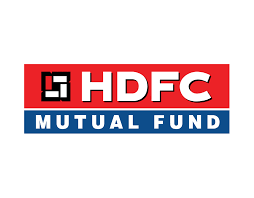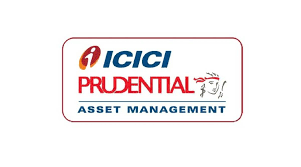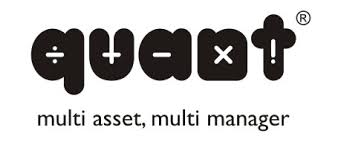
What is a Mutual Fund Portfolio Overlap?
Portfolio overlap in mutual funds happens when an investor holds multiple funds. If those funds have some of the same stocks or securities, they overlap. This is common, especially when investors pick funds with similar strategies or the same sectors or market indices.
A little overlap is normal, but too much of it can be a problem. Having too many of the same assets in multiple funds can make the portfolio less diverse as a whole. Spreading risk across many investments lowers losses. Overlap that is too great can cause stocks or industries to become too concentrated. This increases the portfolio’s vulnerability to fluctuation in the market.
As an investor, you have to understand and monitor portfolio overlap. To achieve your long-term objectives and risk tolerance, it is recommended that you pursue a well-balanced portfolio. Investors who are aware of overlap may choose mutual funds wisely. The overall portfolio should get something new from each fund. This way of thinking about strategy helps people make the most money possible while minimizing risk.
This article is going to talk about portfolio overlap. We’ll talk about how to manage it for better performance and why it’s important.
What is Mutual Fund Portfolio Overlap?
Portfolio overlap occurs when an investor holds multiple mutual funds with similar stocks. This happens when different funds, often with similar strategies, hold the same assets in their portfolios. Some overlap is normal. Yet, an excessive amount of it can be risky to investors. Putting their money into a lot of different funds is part of their plan to diversify.
One of the best ways to manage risk is to spread out your investments so that you are less dependent on any one. You can end up with unintended stock or sector concentration when you combine portfolios and funds. This can raise the portfolio’s risk. Less money is made from the spread of investments.
Individual investors can benefit from looking at portfolio overlap. To reach their financial goals, it can help their mutual funds work well together. Investors can keep a balanced portfolio that fits their risk tolerance and long-term goals this way.
What Factores Leads to Portfolio Overlap?
Portfolio overlap in multi-fund portfolios can arise due to several key factors:
Similarity in Fund Investment Objectives: Overlap is likely when the investment goals of different funds are similar. Investing in large, well-established companies is a possible goal of both large-cap and diversified equity funds. Consequently, there may be a lot of overlap between these funds’ holdings of stocks.
Managers Selecting the Same Stocks: When looking for good investments, fund managers often do in-depth research on the market and stocks. Multiple managers may pick the same securities for their funds if they all come to the same conclusion. Popular equities that suit a variety of strategies frequently exhibit this behavior.
Overlapping Fund Categories: The definitions of large-cap and multi-cap funds are vague or open-ended. This can make these types of funds hold stocks that are similar. Sometimes your portfolios will overlap because of this. Funds that are put into similar groups may invest more in the same kinds of assets.
Market Trends Impacting Style Convergence: Market conditions can induce convergence in the investment strategies of various types of funds. Value and growth funds may both buy the same stocks when a sector, like consumption stocks, goes up in price. This type of convergence increases the likelihood of asset sharing among these funds.
Some overlap in portfolios is going to happen. This information needs to be shared with investors. They should take steps to reduce any excessive overlap. This awareness helps them diversify and manage risk in their investments.
How Does Overlap Impact Diversification?
A bigger risk of portfolio overlap is having more of your money invested in a few unique stocks. This might undermine the objective of diversification in a portfolio. Spreading investments across a lot of different securities lowers the risk of your fund. Although, the actual range drops a lot because there is a lot of overlap. The investor gains a portfolio with fewer types of investments than planned.
For example, you might put your money into three different mutual funds. You expect each fund to have 80-90% unique stocks. You could help them become more diverse by doing this. The funds may offer some diversification if they hold the same stocks, but if they overlap by 40–50%, you don’t really offer much. This can make portfolios less stable and increase the chance of bigger losses. This is correct if the stocks that overlap are in areas that are struggling.
Also, overlap can dilute the benefits of investing in specialist funds, like mid-cap, sectoral, or thematic funds. These funds are often picked because they have specific goals. But they get less out of their investments if most of them are in larger multi-cap funds.
Measuring and Tracking Overlap
You can find and keep track of portfolio overlap with online tools. These tools check to see if two or more mutual fund schemes overlap. These tools find common stocks and their weightings across funds. They show how much overlap exists in your investment.
Comparing mutual fund portfolios uncovers duplicated investments in the latest lists. This process involves reviewing the stocks listed in each fund’s portfolio and noting any repetitions.
Comparison of fund returns across market cycles is another way to find areas of overlap. If the investment return of every portfolio comes in a synchronized sum, it means your investment is overlapping somewhere. Two factors can help investors make their portfolios better. Those are both quantitative and qualitative factors. With this information, they will be able to assess the state of their portfolio.
Strategies to Minimize Portfolio Overlap
Here are some ways retail investors might minimize mutual fund overlap. This will support risk management and diversification better.
Capping Fund Allocation by Asset
Invest in a range of types of assets, such as stocks and bonds. Actually, this will lead to diversification. Limiting the portfolio’s asset class percentage can prevent over-concentration in any category.
Limiting Exposure to Specific Fund Categories
Don’t put too much money into small-cap, mid-cap, or sectoral funds, just because they are all similar. They often touch each other in long ways. Choose funds in different categories to spread their money around different market segments.
Choosing Funds from Different Investment Houses
The choice is between a range of mutual funds from different managers and firms. They should have the best successful ways to invest. Different managers may choose to build portfolios and select stocks in various ways. This lowers the chance of having multiple funds hold the same securities.
Using an Index Fund as a Core Holding
Imagine having an index fund as the main investment in your portfolio. Most of the time, index funds follow a broad market index and offer a solid base of diversified exposure. Growth can be sped up by putting this core holding together with satellite funds. They are actively managed, and the variety will stay.
Regularly Reviewing and Rebalancing the Portfolio
Investors should review each mutual fund’s holdings, ideally once a quarter. This can help spot and fix any unintended overlaps. Rebalancing the portfolio as needed maintains the desired risks and exposures.
These strategies can help investors reduce portfolio overlap. This will improve their investments’ diversification and stability.
Seeking Expert Guidance?
Expert advice is strongly suggested for investors who find it difficult to make the necessary analyses and decisions to set up a well-balanced portfolio. Financial advisors know how to look at an investor’s current fund holdings and make sure that the best investments are made for each person’s needs. Your risk tolerance, your need for cash, and your preferred asset classes are some of these needs.
Engaging a financial advisor can provide significant benefits, such as:
Personalized Portfolio Design
Advisors can create a portfolio that aligns with the investor’s specific financial goals and risk tolerance, ensuring that each fund selection contributes effectively to the overall strategy.
Periodic Portfolio Reviews
A financial advisor’s regular reviews let you make course corrections when they’re needed. This proactive approach helps adapt to changing markets and new investment opportunities. It keeps the portfolio aligned with your goals.
Enhanced Portfolio Oversight
With help from a pro, investors can better monitor their portfolios. Making sure their investments stay diversified and balanced lowers risks like too much overlap.
Contact us for help in managing your portfolio. We guide you in investing your money in the right place and saving for overlap. CAPKCO Finserv Pvt ltd gives investment advice for long-term success. It helps with creating a new portfolio or optimizing current investments.











